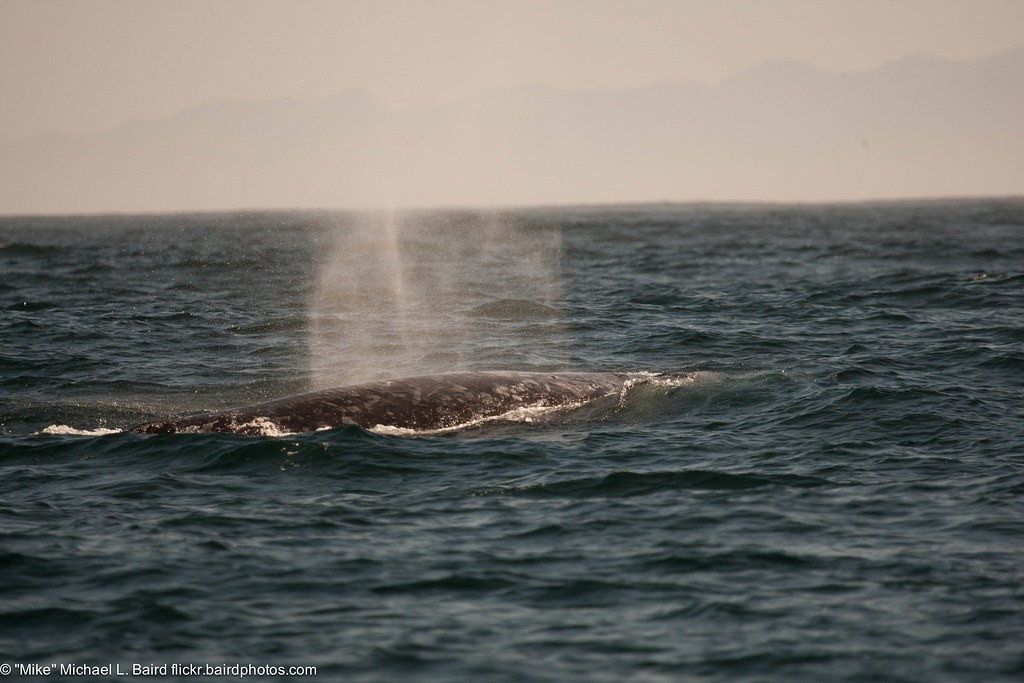Gray whale
A species of Gray whale, Also known as Pacific gray whale, Devil fish, Gray back, Rip sack Scientific name : Eschrichtius robustus Genus : Gray whale
Gray whale, A species of Gray whale
Also known as:
Pacific gray whale, Devil fish, Gray back, Rip sack
Scientific name: Eschrichtius robustus
Genus: Gray whale
Content
Description People often ask General Info
Description
The gray whale has a dark slate-gray color and is covered by characteristic gray-white patterns, scars left by parasites which drop off in its cold feeding grounds. Individual whales are typically identified using photographs of their dorsal surface and matching the scars and patches associated with parasites that have fallen off the whale or are still attached. They have two blowholes on top of their head, which can create a distinctive heart-shaped blow at the surface in calm wind conditions. Gray whales measure from 4.9 m (16 ft) in length for newborns to 13–15 m (43–49 ft) for adults (females tend to be slightly larger than adult males). Newborns are a darker gray to black in color. A mature gray whale can reach 40 t (44 short tons), with a typical range of 15–33 t (17–36 short tons). Notable features that distinguish the gray whale from other mysticetes include its baleen that is variously described as cream, off-white, or blond in color and is unusually short. Small depressions on the upper jaw each contain a lone stiff hair, but are only visible on close inspection. Its head's ventral surface lacks the numerous prominent furrows of the related rorquals, instead bearing two to five shallow furrows on the throat's underside. The gray whale also lacks a dorsal fin, instead bearing 6 to 12 dorsal crenulations ("knuckles"), which are raised bumps on the midline of its rear quarter, leading to the flukes. This is known as the dorsal ridge. The tail itself is 3–3.5 m (10–11 ft) across and deeply notched at the center while its edges taper to a point. 
People often ask
General Info
Lifespan
50-70 years
Diet
The diet of the gray whale primarily consists of marine planktonic organisms, particularly small copepods. Adept at grazing, gray whale are known to consume up to 1,800 kg of krill and small fish per day in feeding periods.
Appearance
Gray whale is a marine mammal with a streamlined, torpedo-shaped body, reaching lengths of 12-16 meters. Its skin is gray, becoming lighter with age. Lacking a dorsal fin, gray whale has a ridge along its back leading to a broad, triangle-shaped tail. Males and females look alike while juveniles are darker in color. Notably, gray whale's peel-like skin, covered in patches of barnacles, gives them a uniquely textured appearance.
Behavior
Gray whale are migratory marine mammals, moving between feeding and breeding grounds. Known for their characteristic 'spyhopping' behavior, they vertically rise above water to view their surroundings. They're solitary or occur in small groups and communicate with complex vocalizations. Environmentally sensitive, they avoid ships and noise pollution, critical for their survival.
Population
Stable
Scientific Classification
Phylum
Chordates Class
Mammals Order
Whales and dolphins Family
Gray whales Genus
Gray whale Species
Gray whale 